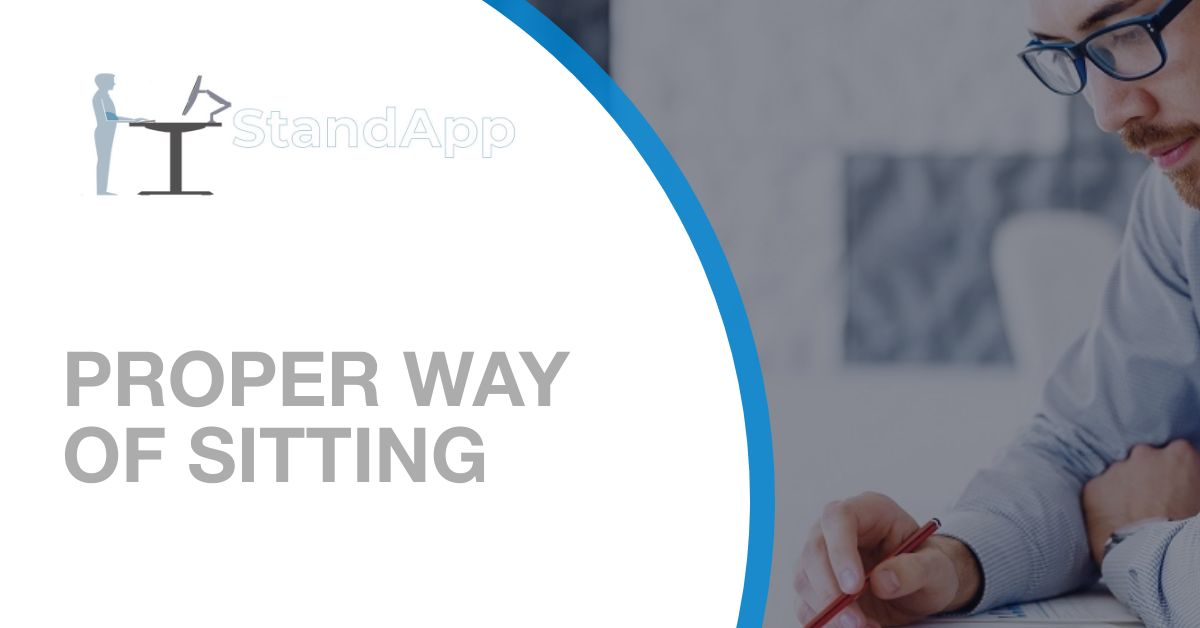
The Right Way to Sit at Your Desk
Sitting at a computer for lengthy periods of time can be harmful to the body. To avoid back discomfort, neck strain, and other issues that may develop over time, it’s critical to maintain your posture and sitting habits. We’ll talk about how good posture might help you avoid these problems while also making you more productive in this post!
Many employees spend more than half of their working day in a seated position in today’s workplace.
Our bodies were designed to move, yet we spend an increasing amount of time in sedentary conditions that reduce our physical activity levels and require us to sit for extended periods of time.
The second concern is that many people are suffering from bad posture while they’re in their seats, putting them at risk for neck and back discomfort, muscular stiffness, reduced mobility, poor balance, and decreased athletic performance.
When seated at your desk, you must pay attention to your posture since good sitting posture may aid in the maintenance of a healthy back and spine.
According to a study, good posture involves placing your body in a way that puts the least amount of strain on your body’s supporting muscles and ligaments.

Excellent posture has the following advantages:
- It promotes the proper use of muscles by keeping bones and joints in good alignment.
- This will assist reduce excessive wear and tear on joint surfaces.
- Ligament tension is reduced, allowing the spine to move more freely.
- It stabilizes the spine and corrects abnormal spinal postures.
- It helps to avoid muscle fatigue by increasing blood flow.
- It helps to prevent injuries from occurring by limiting strain, sprain, and overuse damage.
- It contributes to a good look.
- Improves one’s self-esteem.
How To Sit Properly At A Computer Desk With These 10 Tips
1. Keep your pelvis level with your buttocks resting on the back of your chair.
At your pelvis, begin the process of good sitting posture. You should sit with your pelvic region in a neutral position, with your buttocks resting against the rear of the chair.
You might be wondering, how do I sit with a neutral pelvis? The first step toward establishing a neutral pelvis is identifying your sitz bones. These bones are the most apparent bones in your buttock cheeks when you put your hands underneath them.
You should tuck your pelvis under and round your lower back into a slouched posture as soon as you feel the sitz bones begin to flatten beneath your hands. Now arch your lower back to tilt your pelvis forward. All of your weight will shift to the rear of your thighs, with the sitz bones leaving your hands.
A neutral pelvic posture is halfway between a slouched and tilted-forward position. The sitz bones in a neutral pelvis position will feel pointed.
The bottom of your chair should be adjustable to allow you to sit with your pelvis in a neutral position, with your buttocks against the back of your chair. This will assist to prevent the pelvis from tilting forwards (anterior pelvic tilt) or backwards (posterior pelvic tilt).
2. Keep your ears, shoulders, and hips aligned.
Keeping your ears, shoulders, and hips in line maintains the natural curves of your spine. Any change from this posture will cause your natural curves to fluctuate, putting additional strain on your spine and raising the risk of injury.

3. Maintain the normal curve of your back (Use a back support)
Your lower back should have a little curve, which is where your lordortic curve is. Your back will usually curve in the opposite direction without support, known as kyphosis (hunchback), leaving your lower back more susceptible to injuries including sprains and strains, and disc herniation. A rolled up towel or a tiny cushion can be used to provide support.
4. Keep your hips and knees at a 90-degree angle.
Consider keeping your knees practically in line with your hips when you’re at work. This posture helps to maintain a neutral spine position. Sitting in a chair that is too low places your knees above your hips, while sitting higher up puts your hips considerably higher than your knees. Both of these postures put a lot of strain on your back and can cause back pain.
5. Evenly distribute your weight across both hips (avoid leaning to one side).
When you’re sitting at your desk, it’s easy to lean to one side, but this bad habit causes your spine to curve, which may lead to injuries such as sprains and strains, scoliosis, and disc herniation. When in a seated posture, make sure that the weight of your body is equally distributed between both hips.
6. Keep both feet flat on the ground (if necessary, use a foot stool).
When you fold your legs or just your toes touch the floor, you put stress on your back’s large supportive muscles, as well as impede blood flow. Another disadvantage of a crossed-leg posture is that it puts increased pressure on your lower back and forces you to lean toward one side, resulting in an unbalanced pelvis.

7. Keep your elbows close to your body at all times, with your forearms parallel to the floor.
Keeping your forearms parallel to the floor will reduce strain on your upper extremity joints. Make sure your keyboard and mouse are set at appropriate distances from your body so that you don’t have to extend far forward to use them. If you must reach over your keyboard and/or mouse, your shoulders will round forward, putting extra stress on the acromioclavicular joint (where your collarbone and shoulder blade meet) and the rotator cuff muscles.
8. With the top 1/3 of your computer monitor 18-24 inches from your face, place it at eye level.
You’ll put extra strain on your neck if your computer monitor is set incorrectly. You’ll have to look up or down constantly, placing you at risk for neck strains and sprains, cervical disc herniation, and headaches.
9. Make sure your head isn’t sticking out too far in front of you on a regular basis.
It’s important to understand about this bad habit since it can have a huge impact on your health. According to research, for every inch your head advances forward, 10 pounds of weight is added to your neck! Protruding your head forward when sitting can induce forward head posture, which may cause neck and back pain, muscular spasms, arthritis of the neck, restricted breathing, headaches and migraine, sleeplessness, sleep apnea, chronic tiredness, numbness and tingling in your arms and hands.
10. Take your breaks, and stretch out on a regular basis.

When possible, take a brief rest from sitting at least once every hour to move about your workplace. This might assist with pain relief and muscle tightness. You may also attempt basic stretches to alleviate muscular tension and enhance blood flow while you’re on lunch. The following are some simple exercises that may be done at your desk:
- Neck range of motion (flexion, lateral flexion, and rotation)
- Shoulder shrugs
- Calf raises
- Ankle pumps
- Lunges
- Doorway stretch
If you’re like most individuals, you’ve spent many hours sitting at your workstation and could be suffering from pains and aches as a result of poor posture. Slouching or Crossing your legs while seated has the potential to harm your spine’s health. Fortunately, these faults can be addressed by following the guidelines provided above. By making simple adjustments to your workstation and sitting posture, you may significantly enhance the health of your spine.



